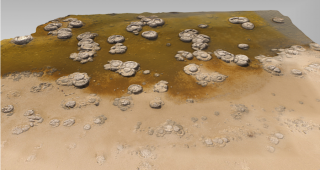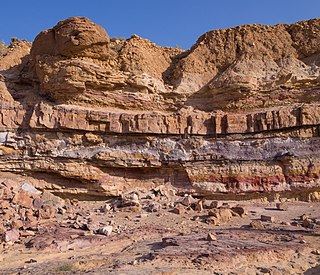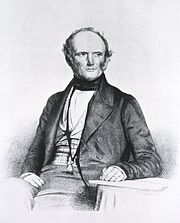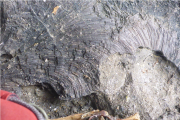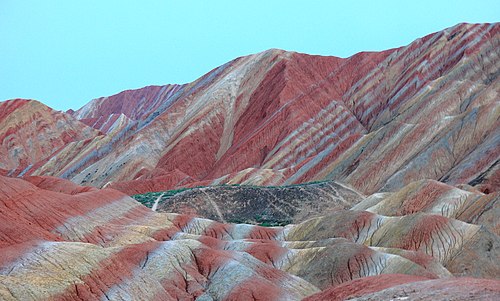Human earth shapers/ETHS101/Rock Record/Reading Rocks
Contents
Rock Reading
Now that we have introduced the different systems on Earth, we are going to think about how these have changed over time.But in order to assess this we need to know about time.
So:
- How do we know how old things are?
- What principles can help us understand things that have happened in the past?
- This is history on steroids!
Note
By following this hyperlink, you will be able to access a 3D model of the Stromatolites, in Lake Thetis in Western Australia.
Overview
What we will do within this Learning Path
- Part 1. First, we will be learning to read rocks. These are our deep time history books. They tell us in a relative sense of their story.
- Part 2. As biota die they may form fossils. How does this happen?
- Part 3. Some special crystals are radioactive clocks. We will examine how these clocks tick and can give us reliable geological age information.
- Part 4. How do we divide time in geology?
- Part 5. We will discuss the dynamic nature of Earth over the geological past and look at how Earth's geosphere has changed in the last 200 million years.
Part 1: Reading Rocks
Relative age and governing principles of geology'
| What you need to know to read rocks | ||
|---|---|---|
| (1) Principle of original horizontality | (2) Law of superposition | (3) Uniformitarianism |
| (4) Principle of fossil succession | (5) Cross-cutting relationships | (6) Gaps in the successiong |
| (7) Rocks are not always horizontal | ||
Principles of original horizontality
A geological term used to describe how sediment is laid down horizontally, or close to horizontal. The corresponding image provides an illustration of different sediment layers in a horizontal formation.
Law of superposition
Sediments deposit over one another, building up layer by layer. This is observable in the corresponding image. Note the varying colours and patterns in the rock surface.
Uniformitarianism
This is a basic assumption in geology. Geologists assume that the geological processes that are occurring in the world today (e.g. volcanism, earthquakes, erosion, sediment movement and deposition) are the same processes that have always occurred. The rates at which these things happen is the same now as it was in the past. James Hutton was a proponent of this idea and it gained a wider audience in the writing of Charles Lyell.Charles Lyell published “The Principles of Geology: Being an Attempt to Explain the Former Changes of the Earth's Surface, by Reference to Causes now in Operation” in 3 volumes in 1830, 1832 and 1833. Charles Darwin took volume 1 published the year before he set out, with him on his voyage on the Beagle.
Fossil succession
As biota die they may be preserved in sediment. The biological remnants are called fossils. Layers of sediment will preserve different fossils. Older layers will preserve older biota. The same fossil at different locations tell us that the rocks in these areas are the same age.
This principle allowed Charles Darwin who visited Hobart in 1836 to identify the rocks around Hobart, and a sample he was given from Quamby Bluff in the north of Tasmania and rocks from the Ralphs Bay area as all being the same age. Banks, M. 1971. A Darwin manuscript on Hobart Town. Papers and proceedings of the Royal Society of Tasmania 105: 5-19.
Rocks are not always horizontal
Although sediments are laid down close to horizontally, once these sediments are turned into rocks (hardened or lithified) they can be acted upon by forces which change their orientation. This can be observed in the landscape image of Zhangye Danxia, Geological Park in China OR by following this hyperlink to a virtual 3D model of tilted sediments formed in the Crescent Head area. New South Wales, Australia
Cross cutting relationships
In the image displaying a cliff face with a built structure on top, we can observe a vertical rock mass cutting through horizontal strata. The lighter rock mass cooled from a molten rock (magma) that intruded into the sedimentary rock. The lighter rock is called a dyke and is younger than the rocks surrounding it.
Gaps in the succession
Rocks can be uplifted into mountains. Erosion can flatten mountains: Over long time periods of millions of years these mountains are worn away by wind ice, and water. New sediments can accumulate on the eroded surfaces.
Rock Names
- Sedimentary Rocks
- Sediments which are particles of rocks that are laid down on the Earth's surface. These sediments eventually turn into rock by rock forming processes generally called "lithification". So sand on the beach may eventually become a sandstone. A sandstone is called a sedimentary rock.
- Igneous Rocks
- Igneous rocks form by the cooling or freezing of molten rock (magma). If the magma cools underground the crystals grow slowly and so can be large. A good example is granite.
- * Basalt Rock
- Basalt rock, a type of Igneous rock, reaches the Earth's surface it forms lava and can build volcanoes. Lava that erupts from volcanoes, such as Kilauea volcano on the Big Island of Hawaii for example, cools to a fine-grained rock called basalt.
- Metamorphic Rocks
- Are rocks have undergone change. They usually start as sedimentary or igneous rocks and become metamorphic rocks after they have been transformed by heat and pressure deep under the surface of the Earth. A common mudstone can turn into slate, or if heated more can turn into the lovely rock in this image which contains gem quality pink garnet.
